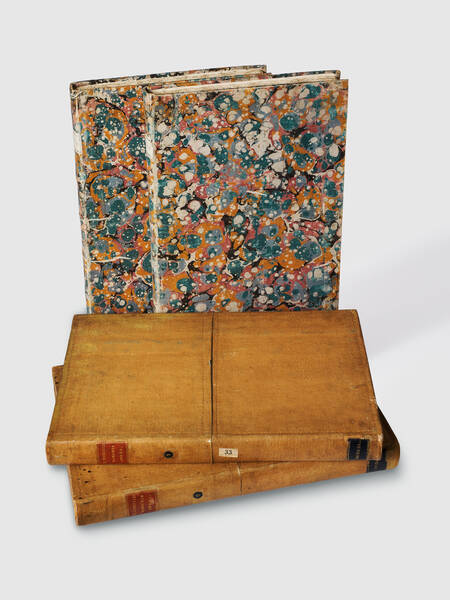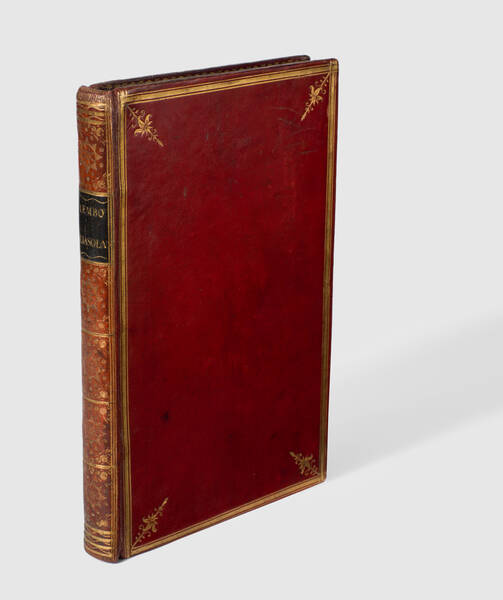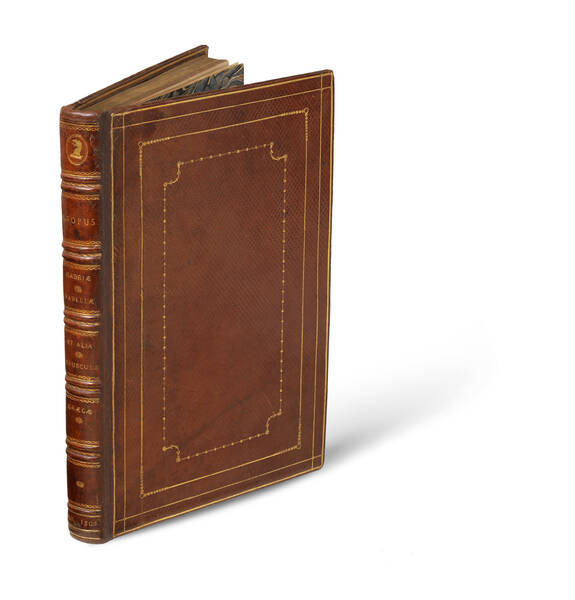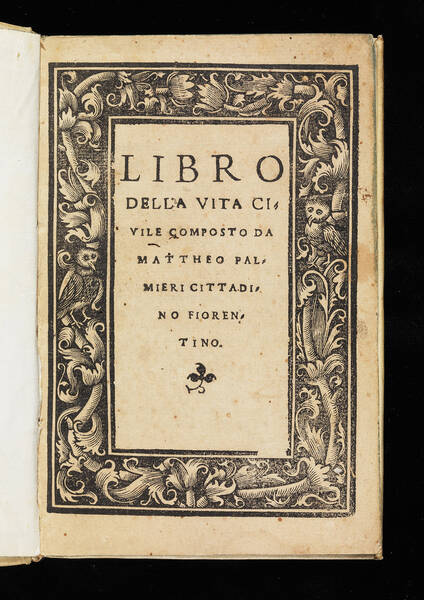[BRUSONI, Girolamo]. Le glorie de gli Incogniti o vero gli huomini illustri dell'Accademia de' signori Incogniti di Venetia.
Venice, appresso Francesco Valuasense stampator dell'Accademia., 1647.Quarto (225 x 160 mm.), [8] leaves, 432 pages including a full-page engraved allegorical frontispiece, full-page engraved emblem of the Academy and 106 engraved portraits of the Academy's members. A pale water stain in the upper white margin of the last pages, one restored tear; a very fine copy in contemporary stiff vellum with manuscript title on spine.
First edition of this biographical compendium from the members of the Accademia degli Incogniti, an intellectual and literary circle founded in Venice, in 1630 by Giovanni Francesco Loredan (1607-1661). Loredan was a Venetian patrician who was extremely active in literary and political circles, becoming part of the Council of Ten and the Signoria of Venice. He formed the Accademia early in his life, while attending the classes of Cesare Cremonini (1550-1631) at the University of Padua. It was during the early 1620s that he gathered a large group of scholars, writers, and men of letters who, armed with pen and paper, defied censure and sought freedom of expression.
The Accademia was a revolutionary intellectual circle in 17th century Venice. ‘'At the heart of Venetian cultural life, the Incogniti […] created an intellectual style that depended on ‘conversation'. They created an ‘academic' style that placed enormous emphasis on the virtuosity of word selection and the power of language, not just for self-expression, but as an instrument for perception and deeper cognition. […] The Incogniti supported the most successful opera libretti, they published moral and religious tracts, philosophical essays, and especially novellas that have come to be labelled libertine. Their wide-ranging and eclectic works betrayed certain preoccupations, including an interest in kabbalistic magic, eroticism tinged with overt homosexuality, parodies of the Christian virtues, blasphemy, and religious speculations that were certainly heterodox and sceptical.'' (Muir, pp.71-72)
Le glorie presents one hundred and six biographies of its members, each accompanied by a list of literary works published and those planned to be published, as well as full-page engraved portraits, mostly produced by Giacomo Piccini (c.1619-1660). The work stands as a panegyric of the cosmopolitan intellectual circle, which boasted members from all over Italy. A vast majority of the members were foreigners to Venice, predominantly from Bologna and Genoa, but also Corfu (then a Venetian territory), Florence and Spoleto, having in common their studies at the University of Padua and their passion for Cremonini's philosophy. These men included Alessandro Adimari (1579-1649), Nicolò Crasso (1585-1656), and Antonio Rocco (1586-1653). The introduction alludes to a potential ensuing publication, as the number of academicians was so great that ‘‘to include them all in one volume would be like trying to reduce the greatness of the Ocean to one river'' however, such compilation was never published.
Somewhat in contradiction with the publication of Le glorie, the Accademia degli Incogniti strove for anonymity and secrecy, hiding behind metaphorical language, allegory and pseudonyms in order to escape prosecution when reading or writing forbidden and censored books. This idea of concealment is evident in Le glorie's allegorical frontispiece, designed by Francesco Ruschi (c. 1600-1661). It depicts a female figure with a crescent moon headdress - possibly the goddess Selene - spearing a winged male figure, which holds a scythe engraved with the title of the work ‘Le glorie degl'Incogniti'; in the foreground, a pensive Hercules sits naked on the skin of the Nemean lion, holding his club. Under his hand rests the emblem of the Accademia Incogniti, the Nile River flowing from an unknown mountain source, an allusion to the secrecy of the Incogniti, alongside their motto ‘Ex ignoto notus' (‘the known from the unknown'). The concept of secrecy is continued in the introductory poem penned by Baldassarre Bonifacio (1585-1659), declaring the origins of the group as stemming from the wisdom of ancient goddesses, formed hidden from the masses of the ‘commoners': ‘'For hidden away, the most beautiful things, always, always in abstruse places, and precious things lie hidden/But, in the blind darkness that once hid itself submerged, may your sun shine upon our names openly.''
In the past, this work has been controversially attributed by bibliographers to Loredan or Giovanni Battista Moroni (c.1520-1578), however it is currently attributed to Girolamo Brusoni (1614- after 1686), an Italian man of letters who, like most Incogniti, studied at the University of Padua and was part of the Carthusian order, from which he fled three times. Brusoni was an intimate friend of Ferrante Pallavicino (1615-1644) one of the most active Incogniti who was sentenced to death due to his scandalous libertine writings.
USTC 4020357; EDIT16 CNCE 007607; Graesse IV, 260 (under Loredano); Autori italiani del '600 III 3607; Rose, Hugh James, ‘Brusoni (Girolamo)' in A new general biographical dictionary, vol. 5. 1848 (p. 162); Muir, Edward, ‘The Libertines' in The Culture Wars of the Late Renaissance, Harvard University Press, 2007, (pp. 61-107).
Other Books
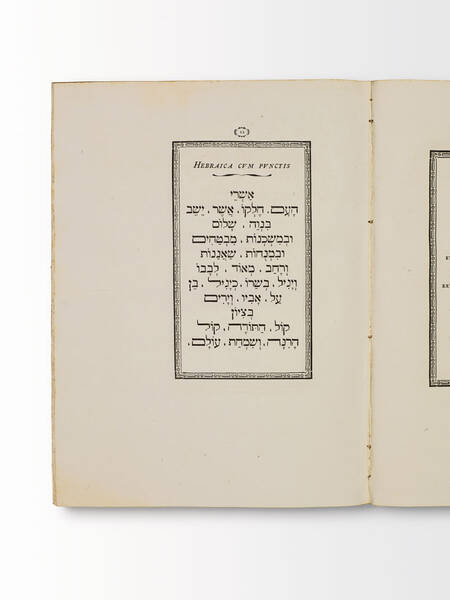
[BODONI]
Pel solenne battesimo di S.A.R. Ludovico Principe primogenito di Parma tenuto al sacro fonte da Sua Maestà Cristianissima e dalla Reale Principessa...
€ 6.000
GEORGEVIC, Bartolomej
De afflictione, tam captivorum quam etiam sub Turcae tributo viventium christianorum.
SOLD OUT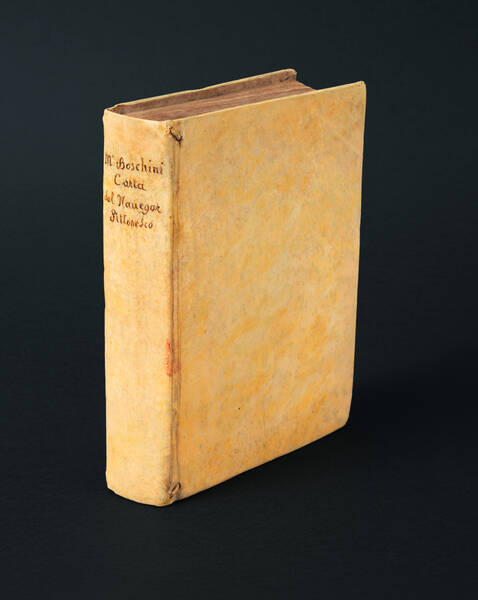
BOSCHINI, Marco
La carta del nauegar pitoresco dialogo tra vn senator venetian deletante, e vn professor de pitura, soto nome d'ecelenza, e de compare. Comparti' in...
€ 7.000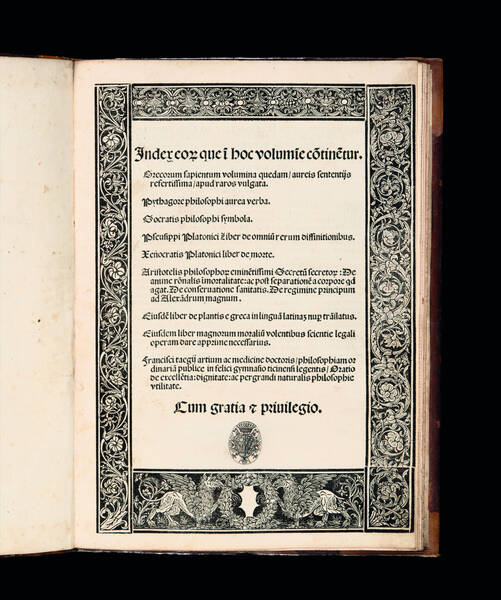
TAEGIO, Francesco
Grecorum sapientum volumina quedam aureis sententijs refertissima apud raros vulgata. Pythagore Aurea verba. Socratis Symbola. Pseusippi Platonici...
€ 12.000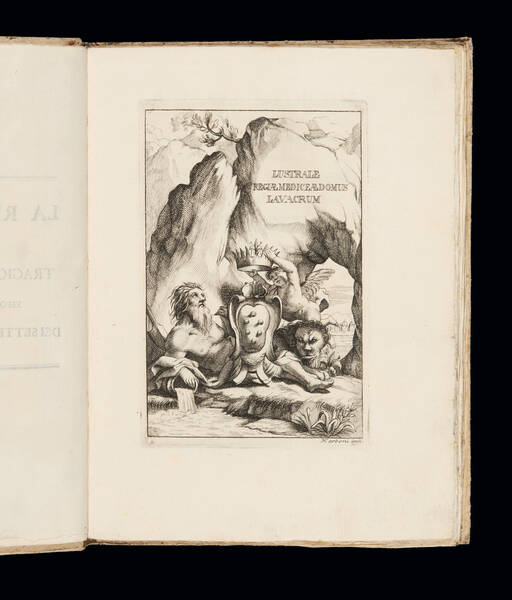
CATANI, Francesco Saverino
La reale medicide, esponente nella morte di Don Garzia i fatti più speciali di Cosimo Duca II. di Firenze ... Tragica festa teatrale, illustrata di...
€ 3.000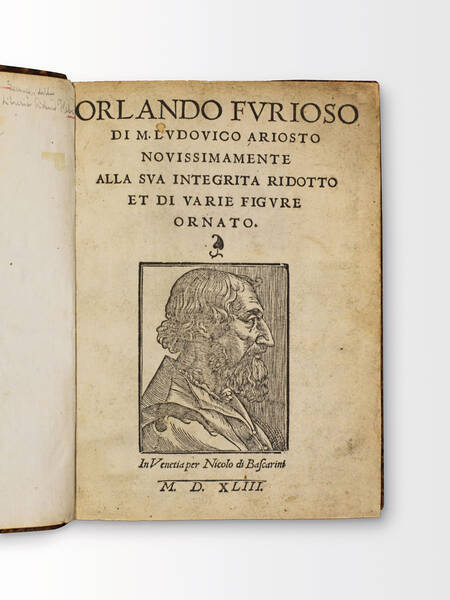
ARIOSTO, Ludovico
Orlando Furioso di M. Ludovico Ariosto novissimamente alla sua integrità ridotto et di varie figure ornato.
€ 12.000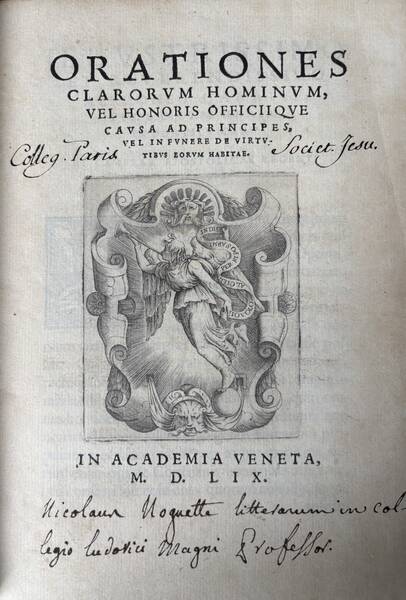
ACCADEMIA VENETA
Orationes clarorum hominum, vel honoris officiique causa ad principes, vel in funere de virtutibus eorum habitae.
€ 1.500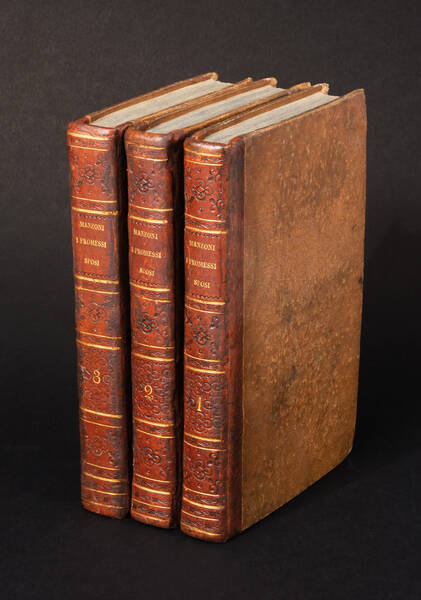
MANZONI, Alessandro
I promessi sposi, storia milanese del secolo XVII scoperta e rifatta da Alessandro Manzoni.
€ 11.500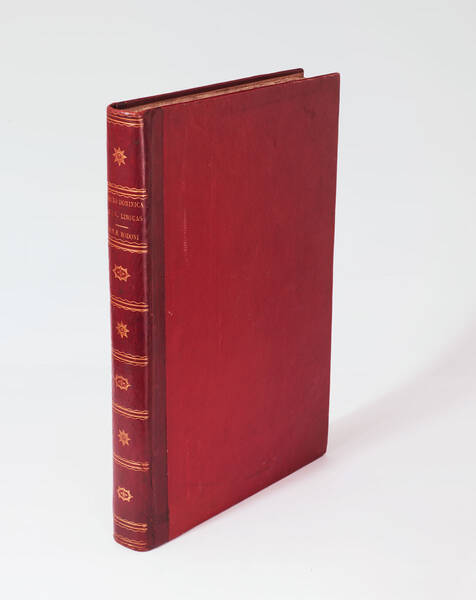
[BODONI]
Oratio Dominica in CLV linguas versa et exoticis characteribus plerumque expressa.
SOLD OUT![[De Architectura libri decem], M. Vitruuius per Iocundum solito castigatior factus cum figuris et tabula vt iam legi et intelligi possit. [De Architectura libri decem], M. Vitruuius per Iocundum solito castigatior factus cum figuris et tabula vt iam legi et intelligi possit.](https://www.medariquier.com/typo3temp/pics/b57e48f107.jpg)
VITRUVIUS POLLIO, Marcus
[De Architectura libri decem], M. Vitruuius per Iocundum solito castigatior factus cum figuris et tabula vt iam legi et intelligi possit.
SOLD OUTMEDA RIQUIER rare books ltd.
4 Bury Street St James's
SW1Y 6AB London
Phone +44 (0) 7770457377
info@medariquier.com
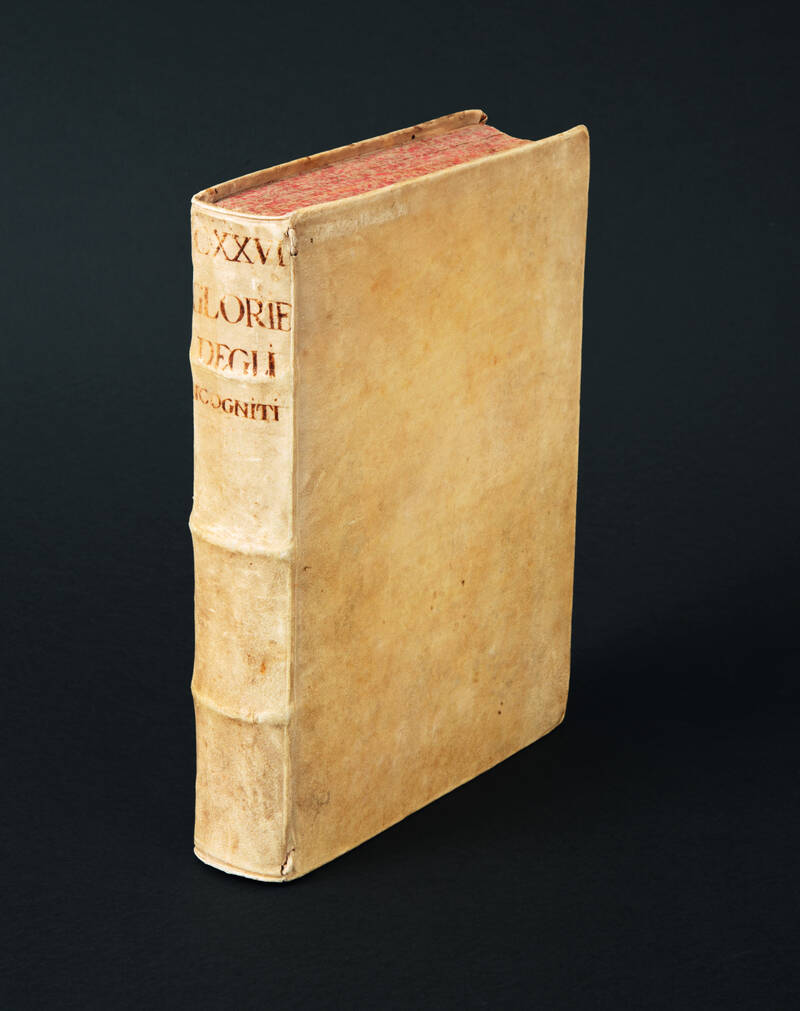
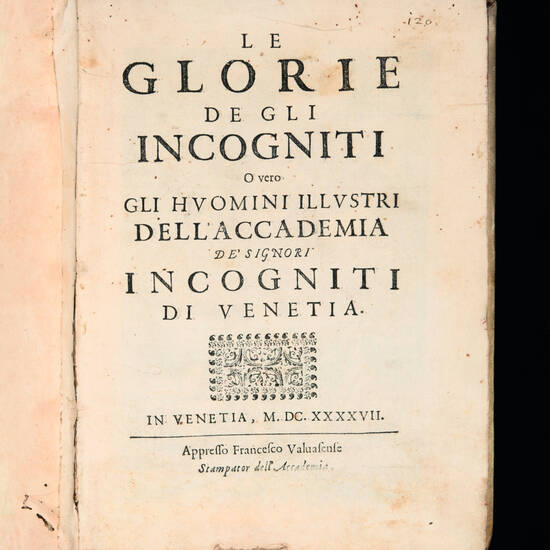
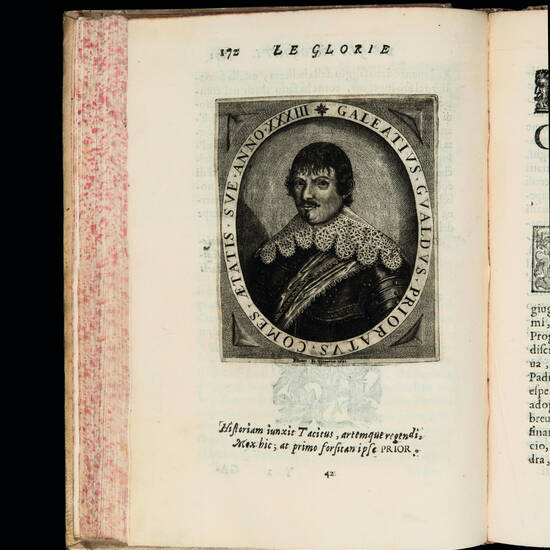
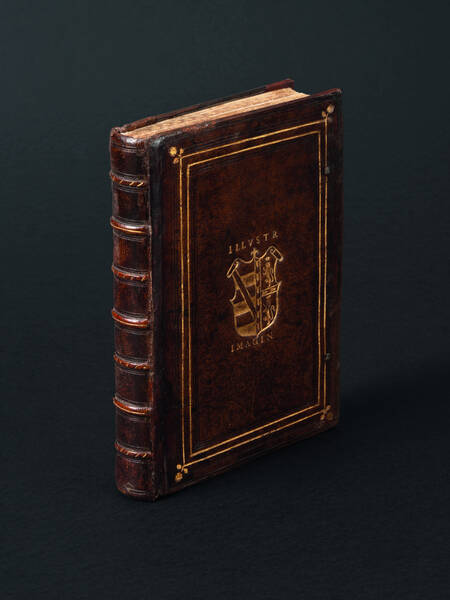
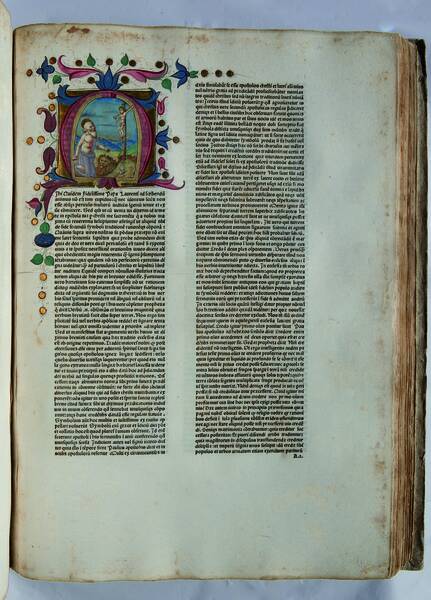
![[Life of the Virgin Mary] [Life of the Virgin Mary]](https://www.medariquier.com/typo3temp/pics/cbb0f7a08f.jpeg)
